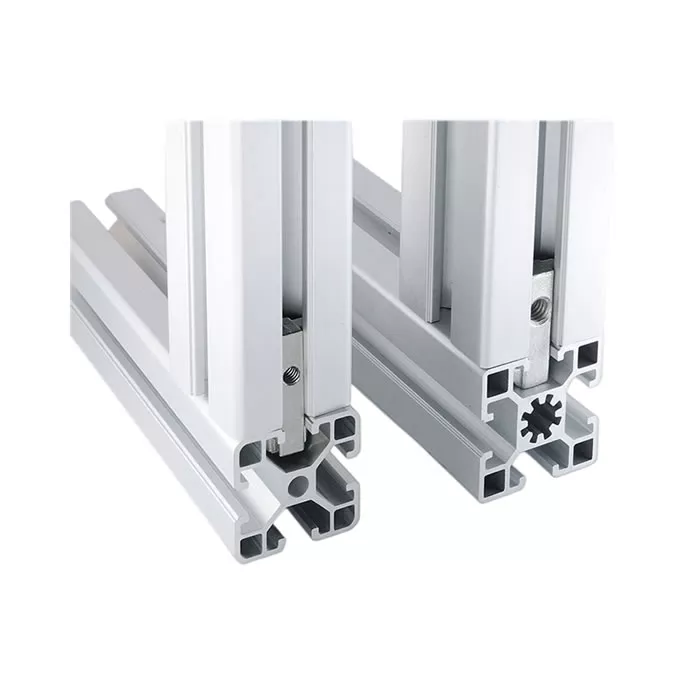Differences Between Linear Guides and Roller Guides
Question : What is the difference between a linear guide and a roller guide?
Answer:
Both Linear Guides and roller guides are critical components used to facilitate smooth motion in industrial and mechanical applications. While these two types of guides serve similar purposes in guiding motion, they differ in terms of design, load capacity, and application suitability. To understand their distinctions better, let's explore each guide type in detail.
Linear Guides: Linear guides, also known as linear motion bearings, are used to provide precise, frictionless movement along a linear path. These guides consist of rails with a rolling element inside, typically balls or rollers, which move along the surface of the rail. Linear guides are designed to provide smooth and accurate motion while supporting high loads in the direction of movement.
Components of Linear Guides:
Rails: The main components that provide the guiding surface for the moving element.
Carriages or Blocks: These are the parts that house the rolling elements and move along the rail.
Rolling Elements: Usually balls or rollers that enable the motion of the carriage along the rail.
Lubrication: Linear guides typically use grease or oil to reduce friction and ensure smooth movement.
Advantages of Linear Guides:
High Precision: Linear guides offer excellent precision and smooth movement, making them ideal for applications that require highly accurate positioning, such as CNC machines and robotics.
Low Friction: The rolling elements in the guide reduce friction, leading to more efficient motion and longer service life.
Versatility: Linear guides can be used in various industrial applications, including automated machinery, assembly lines, and precision equipment.
Load Distribution: The rolling elements allow the load to be distributed evenly, which reduces the wear on individual components and increases the load-carrying capacity.
Disadvantages of Linear Guides:
Higher Cost: Linear guides are more expensive compared to simpler systems like plain bearings.
Size and Weight: Some linear guides, especially those with high load capacities, can be bulky and require more space, making them less suitable for compact applications.
Sensitivity to Contamination: Linear guides are sensitive to dirt and debris, which can cause performance degradation and require regular maintenance.
Roller Guides: Roller guides are a type of linear guide that specifically uses rollers as the rolling elements. The rollers are positioned between the guide rail and the carriage, providing support for linear motion. Roller guides are similar to linear guides but are more suitable for heavy-duty applications because the contact area between the rollers and the rail is larger, which distributes the load over a wider surface.
Components of Roller Guides:
Rails: Similar to linear guides, these are the guiding surfaces.
Carriages: The moving components that carry the rollers.
Rollers: The cylindrical elements that roll between the carriage and rail.
Lubrication: Roller guides also require lubrication for smooth operation and to reduce wear.
Advantages of Roller Guides:
High Load Capacity: Due to the larger contact area of the rollers, roller guides can handle significantly higher loads than linear guides, making them suitable for heavy-duty applications such as machine tools and industrial presses.
Improved Stability: Roller guides provide better stability and rigidity under heavy loads, as the larger surface area of the rollers prevents deformation or deflection under pressure.
Longer Lifespan: The distribution of load across a broader surface area reduces wear, allowing roller guides to last longer in demanding environments.
Disadvantages of Roller Guides:
Friction: Roller guides can generate more friction compared to linear guides with smaller rolling elements (like ball bearings), which can result in less smooth motion and increased power consumption.
Complexity: Roller guides are often more complex in design and may require more maintenance, especially in harsh environments where lubrication and contamination can affect performance.
Size: Roller guides tend to be larger and heavier than linear guides, which can be a disadvantage in applications where space and weight are critical considerations.
Comparison:
Precision: Linear guides provide higher precision due to the smoother rolling action of smaller ball bearings, while roller guides are designed for heavy-duty, high-load applications, sometimes at the expense of precision.
Load Capacity: Roller guides have a higher load capacity due to the larger contact area provided by the rollers, whereas linear guides are more suitable for lighter loads with less pressure.
Cost and Space: Linear guides are generally more compact and cost-effective for less demanding applications. Roller guides, however, are suited for more extreme conditions where higher loads are expected, but they require more space and are typically more expensive.
Maintenance: Linear guides are more susceptible to contamination but easier to maintain in cleaner environments. Roller guides, while more durable under high loads, require careful maintenance, especially in industrial environments with heavy debris or contamination.
 Why Precision Ball Screws are Vital for Industrial Automation and How to Choose the Right Supplier
Why Precision Ball Screws are Vital for Industrial Automation and How to Choose the Right Supplier
 SAIVS Linear Motion Ball Slide Units – Precision and Reliability for Your CNC Needs
SAIVS Linear Motion Ball Slide Units – Precision and Reliability for Your CNC Needs
 High - Quality T - Slot Aluminum Extrusion Profiles from Ningbo SAIVS Machinery Co., Ltd
High - Quality T - Slot Aluminum Extrusion Profiles from Ningbo SAIVS Machinery Co., Ltd
 Enhance Industrial Efficiency with Premium Cylinder End Bearings from SAIVS
Enhance Industrial Efficiency with Premium Cylinder End Bearings from SAIVS
















